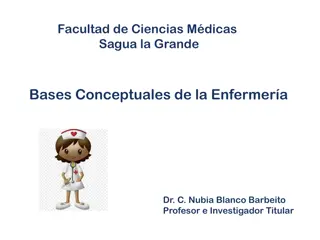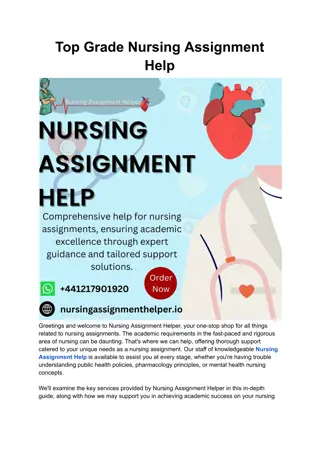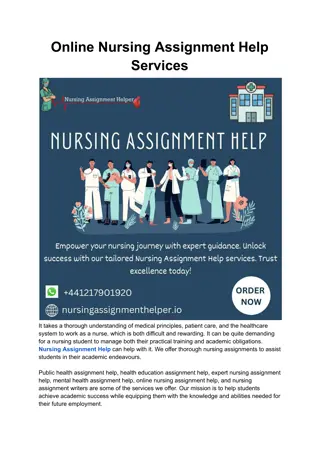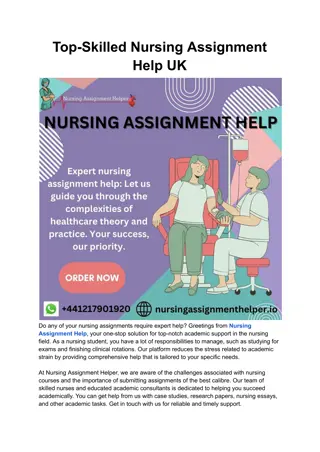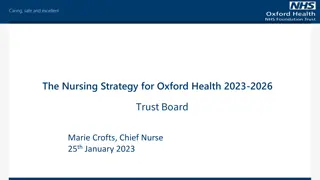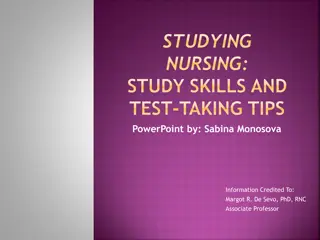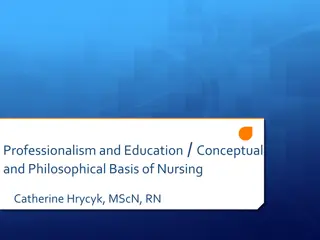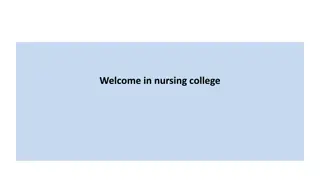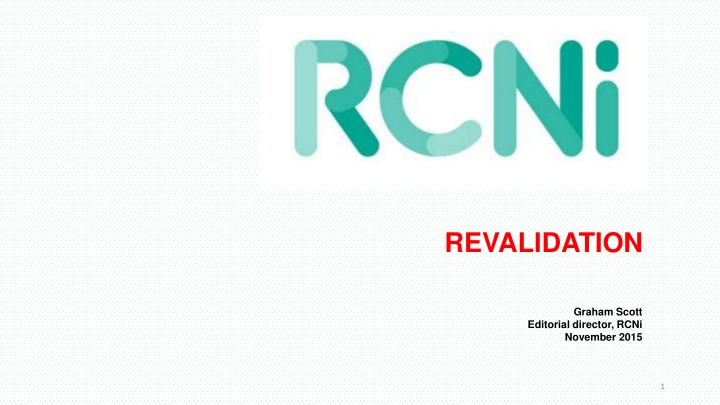
Revalidation: Key Changes and Process Steps
Learn why revalidation is crucial for nurses and midwives, including the impact of previous care scandals and the necessity to update knowledge and skills. Discover the key changes in the revalidation process, who is affected, and the six essential steps to successfully complete revalidation, such as practice hours, CPD, reflective accounts, appraisal, and confirmation.
Download Presentation

Please find below an Image/Link to download the presentation.
The content on the website is provided AS IS for your information and personal use only. It may not be sold, licensed, or shared on other websites without obtaining consent from the author. If you encounter any issues during the download, it is possible that the publisher has removed the file from their server.
You are allowed to download the files provided on this website for personal or commercial use, subject to the condition that they are used lawfully. All files are the property of their respective owners.
The content on the website is provided AS IS for your information and personal use only. It may not be sold, licensed, or shared on other websites without obtaining consent from the author.
E N D
Presentation Transcript
REVALIDATION Graham Scott Editorial director, RCNi November 2015 1
Why revalidation? PREP has become discredited Care scandals at Mid Staffs and elsewhere No assurance to the public that nurses and midwives are keeping their knowledge and skills up to date
Key changes Requirement to write reflective accounts based on feedback you receive, your CPD or events in practice Reflective discussion with another registrant Confirmation from your manager that you have complied
Whos affected? Every nurse and midwife on the NMC register that s 680,000 people Everyone re-registering with the NMC from April 2016 Students need to start preparing now...
Six steps to revalidation 1. Practice 2. Continuing professional development (CPD) 3. Reflective accounts and discussion 4. Appraisal 5. Confirmation 6. Revalidation
Step 1: practice 450 hours in practice every three years All practice that involves a nursing or midwifery qualification counts, including unpaid work Those with a dual registration as nurses and midwives still have to complete 900 hours (450 in each profession)
Step 2: CPD 35 hours of CPD every three years At least 20 must involved learning with others CPD must be linked to the Code Concerns about nurses access to CPD
Step 3: reflection Collect and review feedback positive and negative from managers, patients, students and colleagues Reflect on this feedback and enhance your practice Write at least five reflective accounts every three years Have a reflective discussion with another registrant in the 12 months before your re-registration date
Step 4: appraisal Employers asked to link appraisal systems to revalidation The aim is to improve the quantity and quality of appraisals involving nurses and midwives Lack of clarity around the self-employed and those who receive an inadequate appraisal (or none)
Step 5: confirmation The person who supervises you will confirm you are complying with the Code and revalidation requirements You will record the name and where appropriate the NMC personal identification number of your confirmer
Step 6: revalidation Revalidation will take place every three years, when you re-register with the NMC 60 days notice Self declaration of good health and character Online only via the NMC website
Audit The NMC will carry out spot-checks, some at random, others based on a risk assessment Those selected will have to provide evidence of their CPD and practice hours They will have to provide the name and NMC PIN of the person with whom they had their reflective discussion, and details of their confirmer (if different)
New NMC Code 1. Prioritise people 2. Practise effectively 3. Preserve safety 4. Promote professionalism and trust
Prioritise people You put the interests of people using or needing nursing or midwifery services first. You make their care and safety your main concern and make sure that their dignity is preserved and their needs are recognised, assessed and responded to.
Prioritise people You make sure that those receiving care are treated with respect, that their rights are upheld and that any discriminatory attitudes and behaviours towards those receiving care are challenged.
Practise effectively You assess need and deliver or advise on treatment, or give help (including preventative or rehabilitative care) without too much delay and to the best of your abilities, on the basis of the best evidence available and best practice.
Practise effectively You communicate effectively, keeping clear and accurate records and sharing skills, knowledge and experience where appropriate. You reflect and act on any feedback you receive to improve your practice.
Preserve safety You make sure that patient and public safety is protected. You work within the limits of your competence, exercising your professional duty of candour and raising concerns immediately whenever you come across situations that put patients or public safety at risk. You take necessary action to deal with any concerns where appropriate.
Promote professionalism and trust You uphold the reputation of your profession at all times. You should display a personal commitment to the standards of practice and behaviour set out in the Code. You should be a model of integrity and leadership for others to aspire to. This should lead to trust and confidence in the profession from patients, people receiving care, other healthcare professionals and the public.


